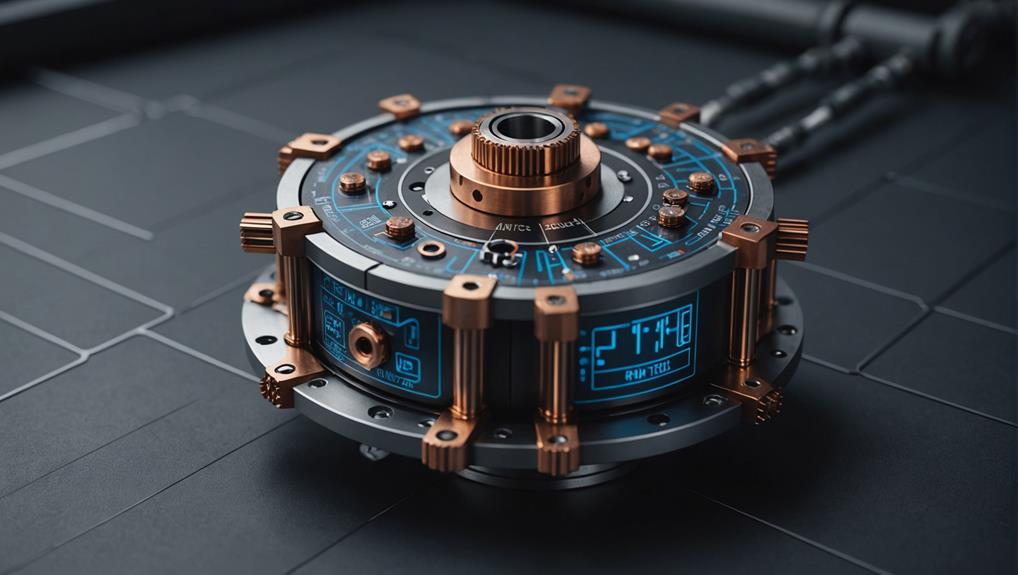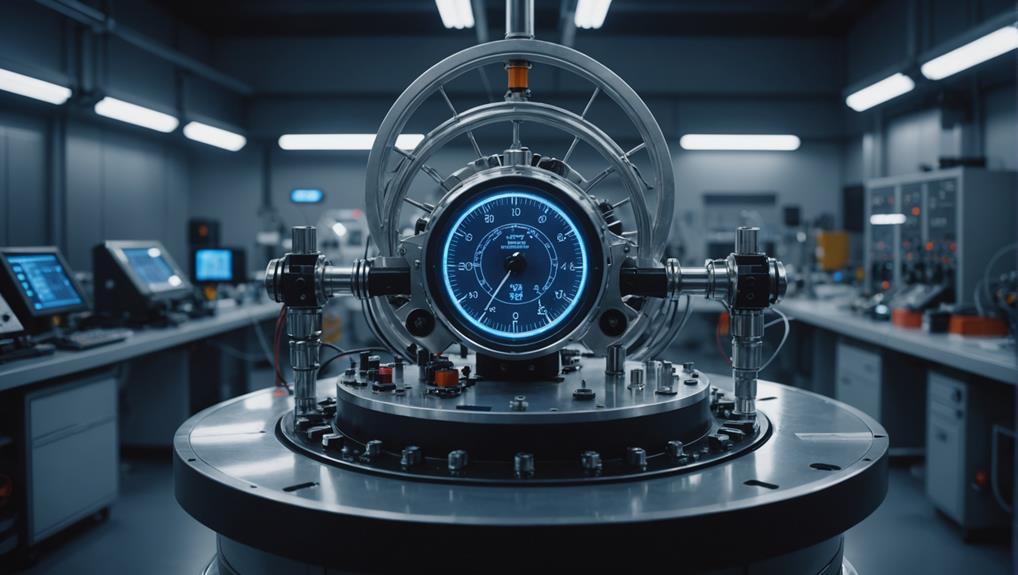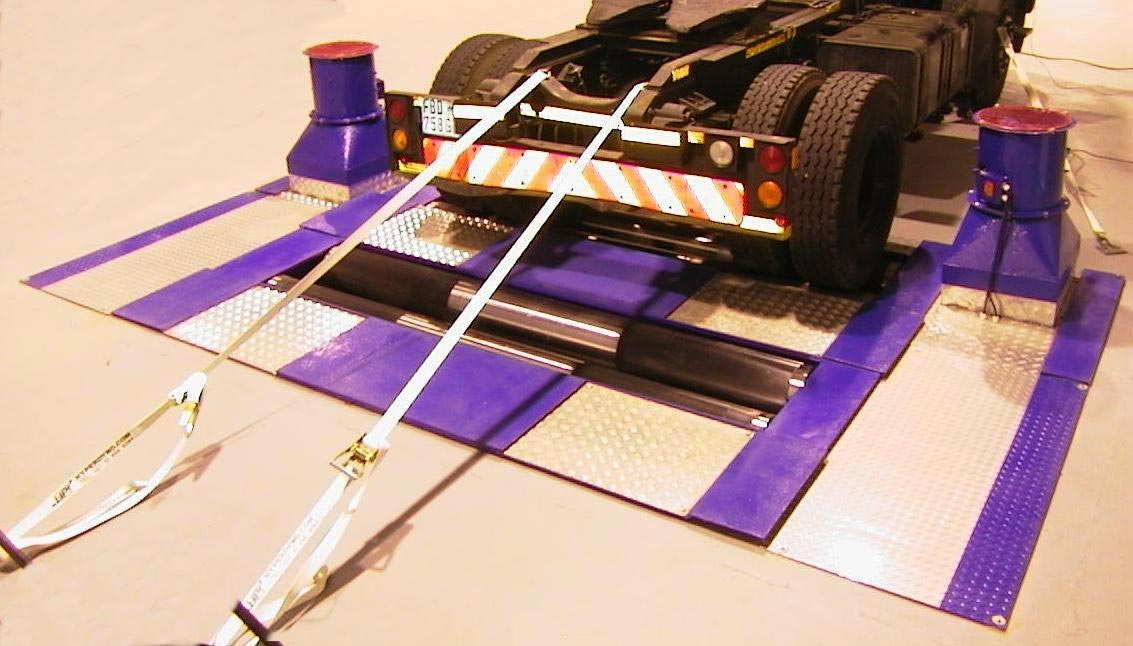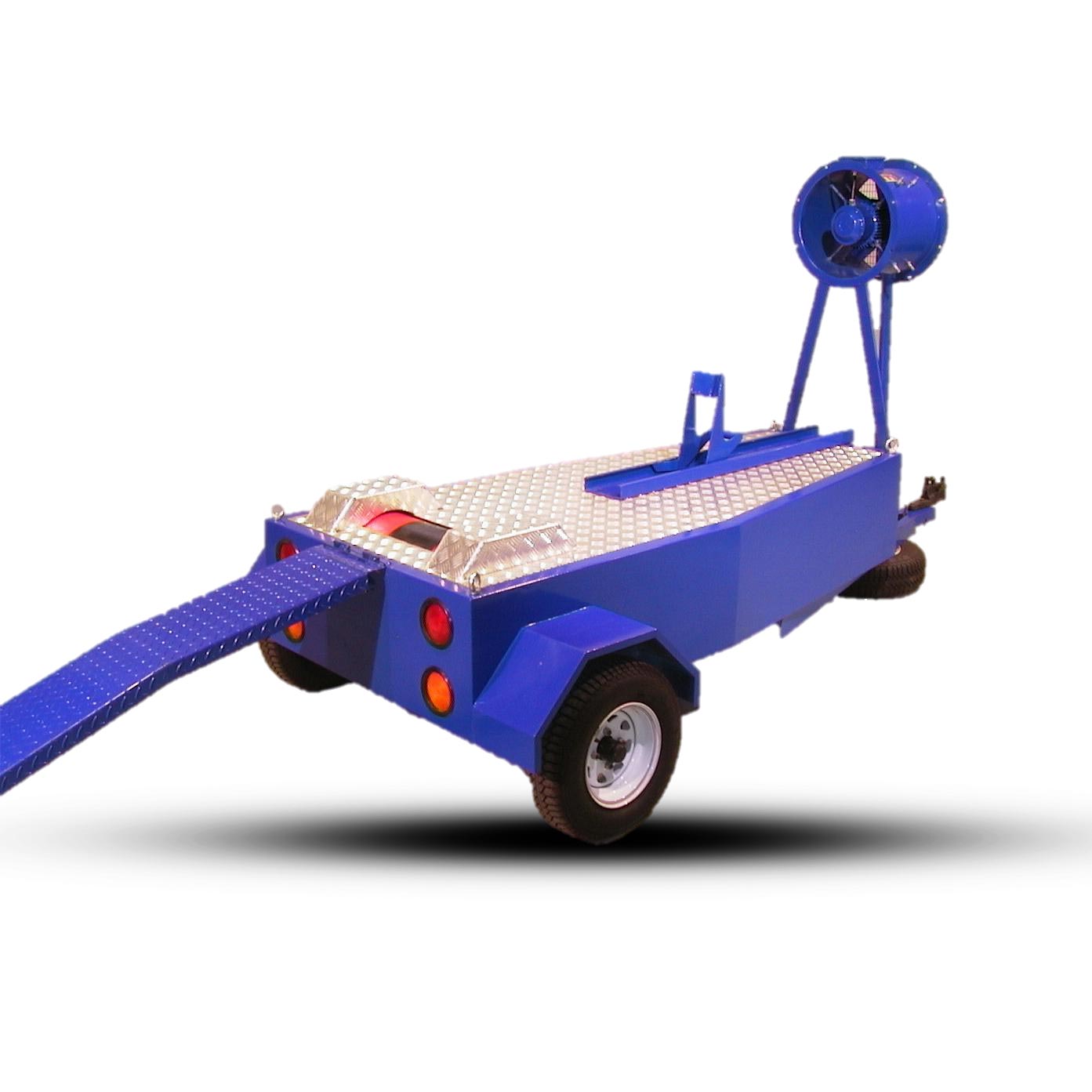
How Dynamometers Enhance Engine Diagnostics and Testing
Necessitating precise measurements, dynamometers unlock the secrets of engine performance, but what else can they reveal about engine diagnostics and testing?
Inertia dynamometers measure vehicle horsepower by accelerating a known mass from a standstill to a specified speed, simulating dynamic conditions created by the engine's acceleration.
The control system records the acceleration rate and RPM, calculating the power output of the vehicle's engine. This measurement provides a thorough picture of an engine's performance, allowing for optimisation of engine design and tuning.
Understanding the principles of inertia and acceleration, engineers can accurately measure horsepower and guarantee compliance with industry standards.
As they examine the capabilities and limitations of inertia dynamometers, they will uncover how these devices contribute to optimising engine performance.
An inertia dynamometer measures vehicle horsepower by accelerating a known mass from a standstill to a specified speed, thereby calculating the power required to achieve this feat.
This is accomplished utilising a rotating drum or flywheel as the inertial mass load, which simulates the dynamic conditions created by the engine's acceleration. As the engine power is applied, the dynamometer's control system records the acceleration rate and RPM, subsequently calculating the power output of the vehicle's engine.
During the dyno test, the engine is revved from a little above idle position to its maximum RPM, allowing for an exhaustive representation of the torque/power curve.
The power output graph is then plotted on a computer screen, providing a precise measurement of the engine's horsepower. Inertia dynamometers are an ideal choice for testing small-sized motors in industries such as robotics, radio control, power equipment, and medical devices due to their simplicity and cost-effectiveness.
Accurately measuring horsepower, inertia dynamometers play a crucial role in optimising engine performance and ensuring compliance with industry standards.
Measuring horsepower with inertia relies on a fundamental comprehension of inertia dynamometer basics, including the relationship between rotational inertia, torque, and angular acceleration.
Accurate power measurement is critical, as it directly affects the validity of test results and subsequent performance evaluations.
Within the domain of dynamometer testing, inertia dynamometers stand out as a unique and effective means of measuring horsepower, leveraging the principles of inertia to calculate power output.
A large flywheel or rotor serves as a fixed inertial mass load, and an inertia dynamometer measures horsepower by calculating the power required to accelerate this load. The testing range of an inertia dynamometer spans from just above idle position to maximum rpm, allowing it to plot a power output graph on the computer screen.
This enables a closer simulation of dynamic conditions created by the engine's acceleration under load. Although the load can be increased freely, this may compromise accuracy, as frictional losses and inertia might affect power output, which is not calculated.
Despite this, inertia dynamometers remain a simple and suitable solution for testing small-sized motors, making them highly suitable for robotics, radio control industry, power equipment, and medical industry applications.
In the pursuit of precise power measurement, inertia dynamometers have emerged as a reliable means of calculating horsepower.
Accurately measuring the power required to start or accelerate a fixed inertial mass load, inertia dynos provide a precise calculation of horsepower output. This measurement is plotted on a computer screen as a power output graph, offering a detailed portrayal of the torque/power curve.
To guarantee accurate power measurement, it is vital to consider the following factors: frictional losses and inertia might affect power output, but are not calculated by the load cell, which can lead to inaccurate readings if not taken into account.
The testing range of an inertia dynamometer typically starts a little above the idle position to the engine's maximum rpm, allowing for a more extensive portrayal of the torque/power curve.
Inertia dynamometers are suitable for testing small-sized motors in different industries due to their simple construction and cost-effectiveness.
Inertia plays a critical role in engine performance, since it affects horsepower output by resisting changes in velocity.
To accurately measure engine performance, it is vital to comprehend the mass and load calculations involved in inertia, in addition to the acceleration rate analysis that influences test results.
Through precise measurement and analysis, the role of inertia in engine performance can be understood and optimised, ultimately leading to improved acceleration and total effectiveness.
Inertia plays a vital role in determining an engine's power output, as it directly affects the rate at which the engine can accelerate the vehicle.
On a dyno, the dynamometer measures the engine's power by applying a load to the engine, which in turn measures the engine's ability to overcome inertia.
Inertia affects the engine's ability to accelerate from a standstill, making it a pivotal factor in determining 0-60 mph times.
It also affects the engine's ability to maintain speed, particularly when driving uphill or carrying heavy loads.
Optimising engine design and tuning to better overcome inertia can achieve improved acceleration and total performance.
Mass and load calculation is a vital aspect of comprehension and interpretation of inertia and acceleration, as it enables engineers to quantify the forces at play and optimise engine performance accordingly.
Inertial dynamometers, specifically designed to measure the power output of an engine, rely on accurate mass and load calculations to provide reliable data. Grasping the distinction between inertia vs mass is pivotal in this scenario, as inertia refers to an object's resistance to changes in motion, whereas mass is a measure of an object's resistance to acceleration.
When calculating load, engineers must consider the flywheel mass, which has a profound impact on the inertial properties of the system.
The load calculation involves determining the total mass of the rotating components, including the flywheel, crankshaft, and other moving parts. Accurate measurement of mass and load enables engineers to better comprehend the inertial forces at play, allowing them to optimise engine performance and fine-tune the power output.
This precise calculation is vital for inertial dynamometers to accurately measure the power output of an engine, providing valuable insights for engine development and improvement.
During the testing process, acceleration rate analysis plays a pivotal role in understanding the intricate relationship between inertia and acceleration.
This analysis is essential in comprehending how inertia dynamometers measure vehicle horsepower. The acceleration rate is calculated using RPM and a timer, or selected by the operator, and is combined with the inertia mass to provide a close approximation of torque used in acceleration.
The inertia mass is unknown except in rare circumstances and can be determined by comparing steady-state and acceleration test data.
WinDyn software has a Specification channel named Inertia, which represents the total inertia of moving parts, and is combined with acceleration rate to provide a close approximation of torque used in acceleration.
Inertia dynamometers use a fixed inertial mass load to calculate the power required to start or accelerate the set amount of mass load, recording the acceleration rate along with rpm using a computer.
Analysis of the acceleration rate provides valuable insights into the intricate relationship between inertia and acceleration, ultimately leading to a more accurate measurement of vehicle horsepower.
When measuring the performance of an engine or motor, dynamometers provide accurate and reliable data.
In dynamometer testing, two primary types of dynamometers exist: inertia dynamometers and steady-state dynamometers.
These two types differ substantially in their approach to measuring horsepower. Inertia dynamometers calculate power by accelerating a fixed inertial mass load, making them suitable for wide-open throttle tests.
Conversely, steady-state dynamometers apply a variable load to measure an engine's ability to hold a specific rpm, making them ideal for constant speed testing.
Steady-state dynamometers use sensors to provide reliable results, but their complexity makes them more suitable for high-profile applications like aircraft and racing.
Inertia dynamometers, while simpler, are better suited for testing small-sized motors and are commonly used in engine dynos and wheel horsepower testing.
The choice between these two types ultimately depends on the specific application.
Inertia dynamometers offer numerous advantages that make them a popular choice among engineers and technicians for various engine testing applications.
Their simplicity and accessibility make them an attractive option for measuring vehicle horsepower. Furthermore, inertia dynamometers provide accurate measurements of power output, torque, and rpm, giving a comprehensive picture of an engine's performance.
The key advantages of inertia dynamometers include their ability to provide a more extensive portrayal of the torque/power curve, allowing for a deeper understanding of an engine's capabilities.
They can test engines at a wide-open throttle (WOT) condition, providing valuable insights into an engine's maximum power output at full load. Additionally, inertia dynamometers are highly suitable for testing small-sized motors, making them ideal for industries like robotics, radio control, power equipment, and medical equipment, where precise measurement of torque and power output is crucial for engine development.
Inertia dynamometers have limitations that must be considered.
A major limitation is that they do not measure torque directly, instead, they calculate power output by measuring the acceleration rate of a fixed inertial mass load. This method can lead to inaccurate readings, particularly if the operator lacks experience.
Furthermore, inertia dynos are only suitable for wide-open throttle tests and do not allow for examination of the vehicle at a constant speed, limiting their testing capabilities.
Frictional losses and inertia can affect power output, but these are not calculated by the load cell, resulting in inaccurate measurements.
Additionally, load can be increased freely on an inertia dyno, but this may compromise accuracy, as the dyno is not designed to handle high loads.
Perhaps most notably, inertia dynos are not suitable for measuring power output in real-world driving conditions, as they do not account for variables such as aerodynamic drag and rolling resistance.
Inertia dynamometers have limitations, but accurate power and torque calculations can still be achieved through careful consideration of different factors.
Calculating inertia power and torque requires a deep comprehension of the underlying principles and variables involved.
WinDyn software calculates inertia power by combining the inertia mass with the acceleration rate, providing a close approximation of torque used in acceleration.
Frictional losses, including mechanical and aerodynamic friction, affect horsepower output but are not measured by the load cell, and they need to be considered when calculating inertia power.
The Specification channel named Inertia in WinDyn software represents the total inertia of moving parts, and it is combined with acceleration rate to provide a close approximation of torque used in acceleration.
The inertia mass is unknown except in rare circumstances, and it can be determined by comparing steady-state and acceleration test data using a SuperFlow engine dynamometer with WinDyn software.
Acceleration rate can be calculated using RPM and a timer or selected by the operator, and it affects the calculation of inertia power.
Accurate power and torque calculations can be achieved by carefully considering these factors, providing valuable insights into a vehicle's performance.
Inertia dyno testing begins with a standardized procedure to ensure accurate and reliable results.
The process typically starts with a wide-open throttle (WOT) test, where the engine is accelerated from a low RPM to its maximum RPM, and the power output is recorded along with the acceleration rate.
This test is repeated multiple times to verify consistent results, and the data is then plotted on a graph to display the power output at diverse RPM levels.
The inertia dyno's load cell measures the acceleration rate of the rotating mass, which is then used to calculate the engine's power output.
The test procedure may vary depending on the type of vehicle and engine being tested, depending on the specific goals of the test, such as identifying power losses or optimizing engine performance.
Inertia dyno testing can simulate real-world driving conditions, such as uphill climbs or towing, to provide a more accurate representation of the engine's power output in different scenarios.
This standardized procedure provides a precise and reliable method for measuring a vehicle's horsepower.
Accurate horsepower measurement is crucial for engine tuning and development, as it has a direct impact on a vehicle's performance, fuel efficiency, and overall operability.
Inaccurate horsepower figures can have far-reaching consequences, including poor engine performance, decreased fuel efficiency, and even engine damage.
To ensure precise measurement, it is vital to consider various factors that affect an engine's power output.
Atmospheric conditions, such as temperature, humidity, and air pressure, can significantly impact horsepower figures.
The Society of Automotive Engineers (SAE) recommends applying correction factors to horsepower measurements to ensure accurate and consistent results across different testing environments.
Key considerations for accurate horsepower measurement include the need to account for atmospheric conditions to provide a more accurate representation of an engine's true power output.
A 1-2% error in horsepower measurement can result in a 5-10% error in fuel injection calibration, highlighting the importance of precise and reliable horsepower figures.
Inaccurate horsepower figures can lead to poor engine performance, decreased fuel efficiency, and even engine damage, emphasizing the need for precise measurement.
How Hyper Power Measures Vehicle Horsepower Using Inertia Dynamometers
Inertia Dynamometer Working Principle
————————————–
Hyper Power's inertia dynamometers operate on the principle of measuring the rotational inertia of a vehicle's wheels, which is directly proportional to the vehicle's mass and velocity. The dynamometer absorbs the energy generated by the vehicle's engine, converting it into a measurable torque output. This output is then used to calculate the vehicle's horsepower.
Measuring Horsepower With Inertia
——————————–
Our inertia dynamometers measure horsepower by accelerating the vehicle's wheels from a standstill to a predetermined speed. The rate of acceleration is directly proportional to the engine's power output. The dynamometer's sensors measure the resulting torque and rotational speed, which are then used to calculate the vehicle's horsepower.
Understanding Inertia and Acceleration
————————————-
Inertia is the tendency of an object to resist changes in its motion. When a vehicle's wheels are accelerated, the inertia of the wheels and the dynamometer's rotational mass resist the change in motion, allowing the dynamometer to measure the engine's power output. The rate of acceleration is directly proportional to the engine's power output, making it an accurate measure of horsepower. If you have any questions about our Custom Dyno Solutions, please contact Hyper Power.
Inertia Vs Steady-State Dynamometers
———————————–
Our inertia dynamometers differ from steady-state dynamometers in that they measure horsepower during acceleration, whereas steady-state dynamometers measure horsepower at a constant speed. Inertia dynamometers provide a more realistic measurement of horsepower, as they simulate real-world driving conditions. For Installation and Setup of our dynamometers, please reach out to Hyper Power.
Advantages of Inertia Dynamometers
———————————
Our inertia dynamometers offer several advantages, including high accuracy, repeatability, and the ability to measure transient horsepower. They are also less expensive and require less maintenance than steady-state dynamometers. For Training and Certification on our dynamometers, please contact Hyper Power.
Limitations of Inertia Dynamometers
———————————
Our inertia dynamometers have some limitations, including the need for a high-inertia dynamometer to accurately measure low-power engines. They are also sensitive to temperature and humidity changes, which can affect accuracy. If you require Technical Support and Maintenance for our dynamometers, please reach out to Hyper Power.
Calculating Inertia Power and Torque
———————————–
Our inertia dynamometers calculate horsepower using the following formula: Horsepower = (Torque x RPM) / 5,252. The torque output is measured by the dynamometer's sensors, and the rotational speed is calculated using the vehicle's gear ratio and wheel speed. For Software Updates and Upgrades, please contact Hyper Power.
Inertia Dyno Testing Procedures
——————————–
Our inertia dyno testing typically involves a series of acceleration tests, during which the vehicle's horsepower is measured at different engine speeds. The results are then used to create a horsepower curve, which provides a detailed view of the engine's power output. If you require Diagnostics and Performance Analysis services, please reach out to Hyper Power.
Importance of Accurate Horsepower Measurement
———————————————
Accurate horsepower measurement is vital for engine tuning, performance optimization, and emissions testing. Our inertia dynamometers provide a reliable and accurate method for measuring horsepower, ensuring that engines are optimized for maximum performance and efficiency. For Rental Services of our dynamometers, please contact Hyper Power.
In summation, our inertia dynamometers provide a reliable and accurate method for measuring vehicle horsepower by measuring the rotational inertia of the vehicle's wheels during acceleration. Their advantages, including high accuracy and repeatability, make them a vital tool for engine tuning and performance optimization. For Dynamometer Testing Services and Accessories and Parts, please contact Hyper Power.

Necessitating precise measurements, dynamometers unlock the secrets of engine performance, but what else can they reveal about engine diagnostics and testing?

Navigating the complexities of torque measurement requires a deep understanding of the underlying principles and mechanisms to ensure accurate results.

Precise control and optimization of engine performance await, but only for those who unlock the secrets of dynamometer-driven data analysis.

Gaining insight into the differences between inertia and brake dynamometers is crucial for ensuring accurate testing results in various industries.

Tapping into the precise measurement capabilities of dynamometers, uncover the secrets to optimizing fuel efficiency and slashing emissions in the automotive industry.

Witness the importance of rigorous safety protocols and best practices in dynamometer testing to avoid catastrophic failures and ensure accurate results.

Harnessing the nuances of precision measurement is crucial to avoiding costly errors in dynamometer testing, but what are the key factors to consider?

Witness the transformative power of dynamometers in unlocking your vehicle’s hidden performance potential, but only if you know how to harness their precision.





